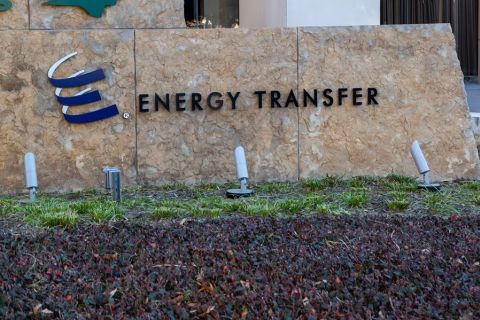U.S. natural gas futures jumped about 10% to a two-week high on July 11 on forecasts for hotter-than-normal weather to continue across much of the country, including Texas where the power grid operator urged consumers to conserve energy.
Texas’s power grid operator warned of potential rolling blackouts amid predictions demand would hit all-time highs on July 11 and 12 as homes and businesses crank up their air conditioners to escape the extreme heat.
That jump in gas prices, which was only the highest in the past few days, came despite an increase in U.S. output to record highs and forecasts for lower gas demand over the next two weeks than previously expected.
Traders also noted the ongoing outage at Freeport LNG’s export plant in Texas will leave more gas in the U.S. for utilities to quickly refill low stockpiles for the winter.
Freeport, the second-biggest U.S. LNG export plant, was consuming about 2 Bcf/d of gas before it shut on June 8. Freeport LNG has said the facility could return to service by October. Some analysts, however, think the plant could remain shut longer.
In what has been an extremely volatile couple of months, front-month gas futures for August delivery on the Nymex rose 58.1 cents, or 9.6%, to $6.615 per MMBtu at 9:22 a.m. EDT (1322 GMT), putting the contract on track for its highest since June 22.
That was the biggest one-day percentage gain since July 7 when prices rose by 14%. The increase also boosted the premium of futures for August over September to a record high for a second day in a row.
With the U.S. Federal Reserve expected to keep raising interest rates, open interest in Nymex futures fell on July 8 to its lowest since July 2016 for a second day in a row as investors cut back on risky assets like commodities.
Recent price increases prompted gas speculators last week to cut their net short futures and options positions on the Nymex and Intercontinental Exchanges, according to the U.S. Commodity Futures Trading Commission's Commitments of Traders report.
So far this year, the front-month was up about 79% as much higher prices in Europe and Asia keep demand for U.S. LNG exports strong, especially since Russia’s Feb. 24 invasion of Ukraine stoked fears Moscow would cut gas supplies to Europe.
Gas was trading around $51 per MMBtu in Europe and $39 in Asia.
Since mid-June, Russia has exported around 3.8 Bcf/d of gas on the three main lines into Germany—Nord Stream 1 (Russia-Germany), Yamal (Russia-Belarus-Poland-Germany) and the Russia-Ukraine-Slovakia-Czech Republic-Germany route.
That is down from around 6.5 Bcf/d in early June and an average of 9.4 Bcf/d in July 2021.
Analysts expect Russian exports to Europe will drop further next week when Nord Stream shuts for maintenance from July 11-21.
Top Producer
U.S. futures lag far behind global prices because the United States is the world’s top producer, with all the gas it needs for domestic use, while capacity constraints limit LNG exports.
Data provider Refinitiv said average gas output in the U.S. Lower 48 states rose to 96.2 Bcf/d so far in July from 95.3 Bcf/d in June. That compares with a monthly record of 96.1 Bcf/d in December 2021.
With hotter weather coming, Refinitiv projected average U.S. gas demand including exports would rise from 97.9 Bcf/d this week to 98.3 Bcf/d next week. Those forecasts were lower than Refinitiv’s outlook on July 8.
The average amount of gas flowing to U.S. LNG export plants slid to 11.1 Bcf/d so far in July from 11.2 Bcf/d in June. That was down from 12.5 Bcf/d in May and a monthly record of 12.9 Bcf/d in March due to the Freeport outage.
The seven big U.S. export plants can turn about 13.8 Bcf/d of gas into LNG.
Recommended Reading
Oil and Gas Chain Reaction: E&P M&A Begets OFS Consolidation
2024-04-26 - Record-breaking E&P consolidation is rippling into oilfield services, with much more M&A on the way.
Exxon Mobil, Chevron See Profits Fall in 1Q Earnings
2024-04-26 - Chevron and Exxon Mobil are feeling the pinch of weak energy prices, particularly natural gas, and fuels margins that have cooled in the last year.
Marathon Oil Declares 1Q Dividend
2024-04-26 - Marathon Oil’s first quarter 2024 dividend is payable on June 10.
Talos Energy Expands Leadership Team After $1.29B QuarterNorth Deal
2024-04-25 - Talos Energy President and CEO Tim Duncan said the company has expanded its leadership team as the company integrates its QuarterNorth Energy acquisition.
Energy Transfer Ups Quarterly Cash Distribution
2024-04-25 - Energy Transfer will increase its dividend by about 3%.




